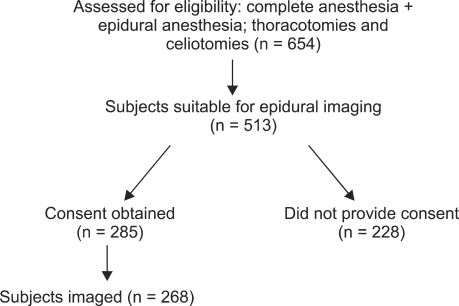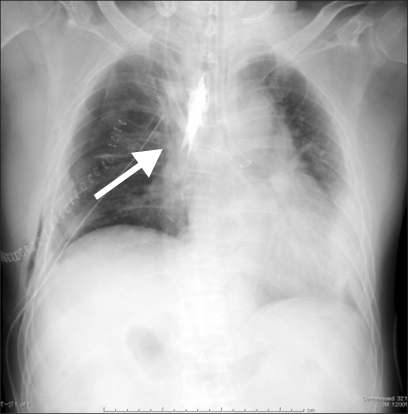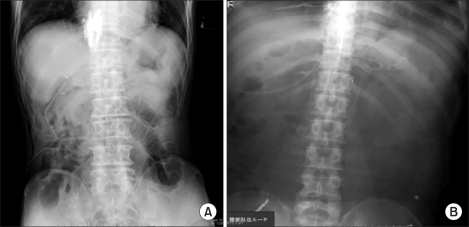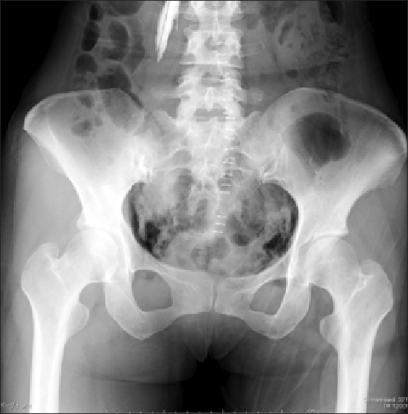Korean J Pain.
2010 Dec;23(4):247-253. 10.3344/kjp.2010.23.4.247.
Use of Imaging Agent to Determine Postoperative Indwelling Epidural Catheter Position
- Affiliations
-
- 1Department of Anesthesiology and Intensive Care Medicine, Oita University Faculty of Medicine, Yufu, Japan. utetsuya@oita-u.ac.jp
- 2Department of Human Anatomy, Oita University Faculty of Medicine, Yufu, Japan.
- KMID: 1454708
- DOI: http://doi.org/10.3344/kjp.2010.23.4.247
Abstract
- BACKGROUND
Epidural anesthesia is widely used to provide pain relief, whether for surgical anesthesia, postoperative analgesia, treatment of chronic pain, or to facilitate painless childbirth. In many cases, however, the epidural catheter is inserted blindly and the indwelling catheter position is almost always uncertain.
METHODS
In this study, the loss-of-resistance technique was used and an imaging agent was injected through the indwelling epidural anesthesia catheter to confirm the position of its tip and examine the migration rate. Study subjects were patients scheduled to undergo surgery using general anesthesia combined with epidural anesthesia. Placement of the epidural catheter was confirmed postoperatively by injection of an imaging agent and X-ray imaging.
RESULTS
The indwelling epidural catheter was placed between upper thoracic vertebrae (n = 83; incorrect placement, n = 5), lower thoracic vertebrae (n = 123; incorrect placement, n = 5), and lower thoracic vertebra-lumbar vertebra (n = 46; incorrect placement, n = 7). In this study, a relatively high frequency of incorrectly placed epidural catheters using the loss-of-resistance technique was observed, and it was found that incorrect catheter placement resulted in inadequate analgesia during surgery.
CONCLUSIONS
Although the loss-of-resistance technique is easy and convenient as a method for epidural catheter placement, it frequently results in inadequate placement of epidural catheters. Care should be taken when performing this procedure.
Keyword
MeSH Terms
Figure
Cited by 1 articles
-
Epidural Catheter Malposition in a Failed Epidural Anesthesia Confirmed by Computed Tomography
Se Jin Lee, Sang Ho Kim, Sun Young Park, Mun Gyu Kim, Bo Il Jung, Si Young Ok
Korean J Pain. 2011;24(1):44-47. doi: 10.3344/kjp.2011.24.1.44.
Reference
-
1. Liu S, Carpenter RL, Neal JM. Epidural anesthesia and analgesia. Their role in postoperative outcome. Anesthesiology. 1995; 82:1474–1506. PMID: 7793661.2. Grass JA. The role of epidural anesthesia and analgesia in postoperative outcome. Anesthesiol Clin North America. 2000; 18:407–428. PMID: 10935017.
Article3. Park WY, Thompson JS, Lee KK. Effect of epidural anesthesia and analgesia on perioperative outcome: a randomized, controlled Veterans Affairs cooperative study. Ann Surg. 2001; 234:560–569. PMID: 11573049.4. Burn JM, Guyer PB, Langdon L. The spread of solutions injected into the epidural space. A study using epidurograms in patients with the lumbosciatic syndrome. Br J Anaesth. 1973; 45:338–345. PMID: 4267504.
Article5. Mehta M, Salmon N. Extradural block. Confirmation of the injection site by X-ray monitoring. Anaesthesia. 1985; 40:1009–1012. PMID: 4061788.
Article6. Muneyuki M, Shirai K, Inamoto A. Roentgenographic analysis of the positions of catheters in the epidural space. Anesthesiology. 1970; 33:19–24. PMID: 5430289.
Article7. Sánchez R, Acuña L, Rocha F. An analysis of the radiological visualization of the catheters placed in the epidural space. Br J Anaesth. 1967; 39:485–489. PMID: 6027957.
Article8. Hogan Q. Epidural catheter tip position and distribution of injectate evaluated by computed tomography. Anesthesiology. 1999; 90:964–970. PMID: 10201664.
Article9. Rodgers A, Walker N, Schug S, McKee A, Kehlet H, van Zundert A, et al. Reduction of postoperative mortality and morbidity with epidural or spinal anaesthesia: results from overview of randomised trials. BMJ. 2000; 321:1493. PMID: 11118174.
Article10. Du Pen SL, Williams AR, Feldman RK. Epidurograms in the management of patients with long-term epidural catheters. Reg Anesth. 1996; 21:61–67. PMID: 8826026.11. Yokoyama M, Hanazaki M, Fujii H, Mizobuchi S, Nakatsuka H, Takahashi T, et al. Correlation between the distribution of contrast medium and the extent of blockade during epidural anesthesia. Anesthesiology. 2004; 100:1504–1510. PMID: 15166571.
Article12. Genovese A, Stellato C, Marsella CV, Adt M, Marone G. Role of mast cells, basophils and their mediators in adverse reactions to general anesthetics and radiocontrast media. Int Arch Allergy Immunol. 1996; 110:13–22. PMID: 8645973.
Article13. Wong GT, Irwin MG. Contrast-induced nephropathy. Br J Anaesth. 2007; 99:474–483. PMID: 17681968.
Article14. Sjøgren P, Gefke K, Banning AM, Parslov M, Overgaard Olsen LB. Lumbar epidurography and epidural analgesia in cancer patients. Pain. 1989; 36:305–309. PMID: 2710559.
Article
- Full Text Links
- Actions
-
Cited
- CITED
-
- Close
- Share
- Similar articles
-
- The Relationships between the Methods of the Epidural Catheter Fixation and the Postoperative Position Change of the Catheter
- Entrapping of Epidural Catheter after Postoperative Epidural Pain Control: A case report
- The Effect of Angle on the Position of the Catheter Tip in Paramedian Approach of Thoracic Epidural Catheterization
- Breakage of a thoracic epidural catheter during its removal: A case report
- Epidural Catheter Migration Associated with Patient Movement






